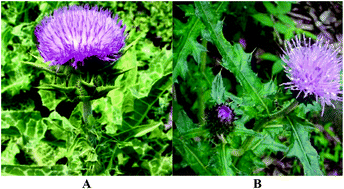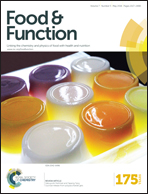Hepatoprotective effect of flavonoids from Cirsium japonicum DC on hepatotoxicity in comparison with silymarin
Abstract
Cirsium japonicum DC is a perennial plant that is widely distributed throughout China. Flavonoids are the major active constituents of C. japonicum, which has been reported to possess many bioactivities. This study was designed to investigate the protective effects of flavonoids from C. japonicum against liver injury using carbon tetrachloride (CCl4)-induced hepatocyte injury, with silymarin as a positive control. Silymarin is a mixture of flavonoids from Silybum marianum, a traditional European food plant with clear hepatoprotective effects. The results indicated that the pretreatment with C. japonicum flavonoids could significantly reverse CCl4-induced L02 cell viability decrease similarly to silymarin. Analysis of flavonoids of C. japonicum and silymarin by HPLC showed that these two mixtures may contain one common component, which may be the major active ingredient responsible for their hepatoprotective effects. It is concluded that C. japonicum could be developed into functional foods with hepatoprotective efficacy, similarly to S. marianum.


 Please wait while we load your content...
Please wait while we load your content...